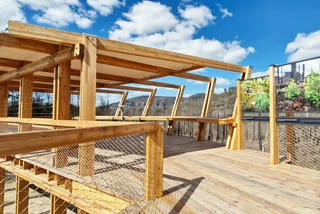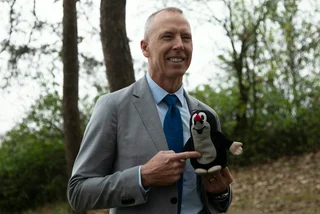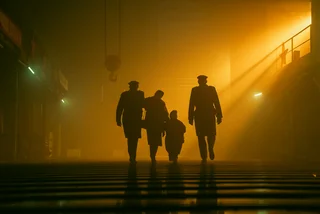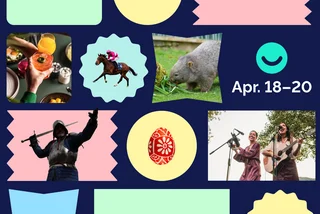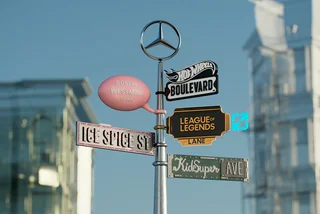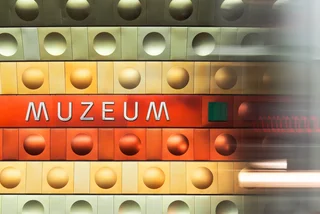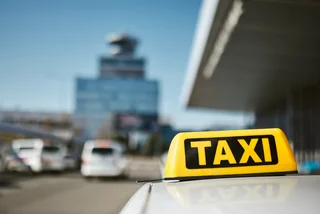The Vltava river has several islands that, while easy to get to, are often overlooked by Prague’s residents. Some can be reached by ferries, which can be used with a tram ticket or pass, or from bridges.
Sports is a theme, as many sporting clubs have headquarters on the islands. Some are for members only, and others allow a bit of public access with reservations.
PARTNER ARTICLE
But even for people who aren’t members there are some places to relax and have a snack, playgrounds for children, pedal boat rentals and other attractions.
Some places in Prague such as Rohanský ostrov retain the historical name island, but have long been part of the mainland. In the long term, a new development on Rohanský ostrov will see a part of the island restored as park surrounded by water.
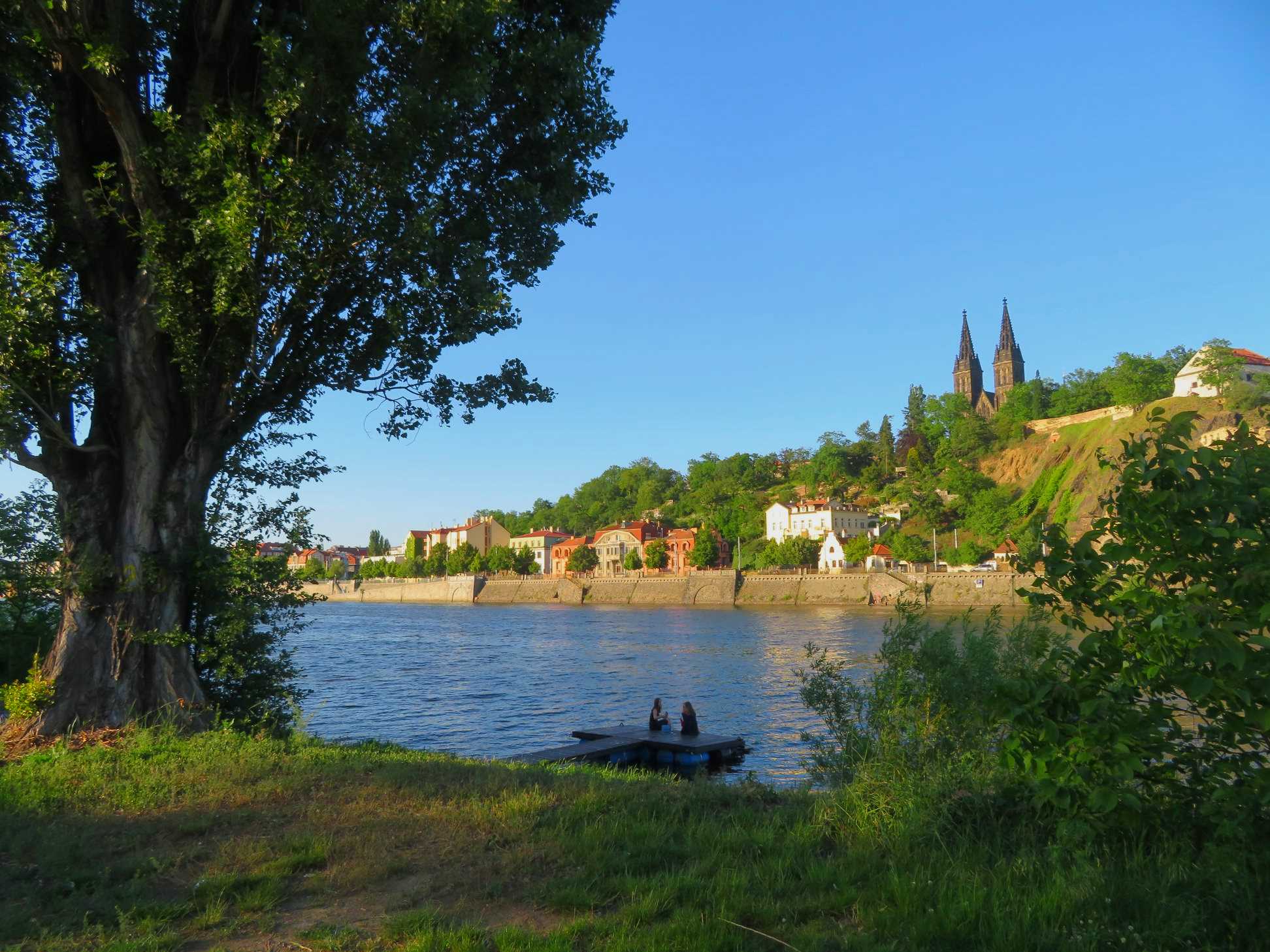
Císařská louka
How to get there: ferry P5 from Výtoň, P4 from Kotevní; by foot from tram stop Lihovar
What to do: rent paddle boards or canoes, play volleyball, golf, have a snacks or a meal, bike ride, camp, sit in solitude
If you are truly seeking solitude, Císařská louka provides it. The 1.7-kilometer-long island is home to a few sports complexes, as well as some overgrown fields and semi-abandoned buildings. The northern side, reached by ferry, has a small snack stand that also rents paddle boards and canoes, and there are places to sit and appreciate the view of Vyšehrad and activity on the Vltava river.
A yacht club and golf driving range are for members, but there is a sand volleyball court and red-clay tennis courts that can be rented online in advance. Near the volleyball court is Restaurace Cinda, with indoor and outdoor seating and a menu of mostly Czech cuisine at moderate prices and lunch specials. Much of the island is taken up by a campground for caravans with a few tents.
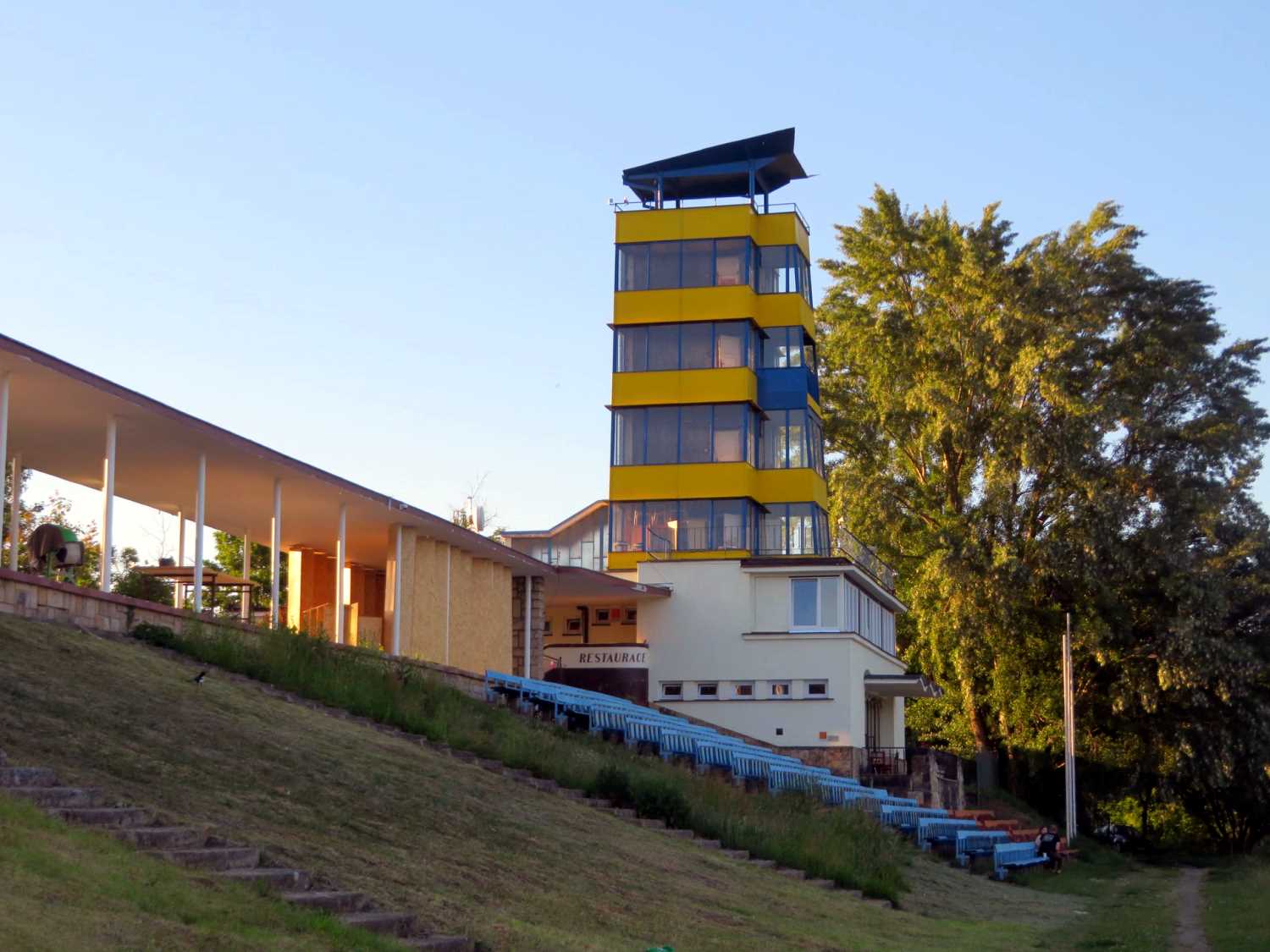
Císařská louka, which means imperial meadows, was originally known as Královská louka, or royal meadows. It did not become an island until 1899–1903, when sand was excavated from the western side to create the Smíchovský přístav, an area of docks for rafts. The name wasn’t changed, though, since there already was a Císařský ostrov.
The area’s big claim to fame is that is hosted a royal coronation feast for Wenceslas II, most likely in 1297. As you sit on the wild grass drinking a beer and eating an ice cream, you can ponder your new connection to history.
In the 19th century, the island hosted sporting events such as as the first football match between Sparta and Slavia in 1896. Football was played there until 2012 when the FC Radlice’s lease expired. In the southern part of the island, there is also a seating area and tall referee tower for boat races, usually with nobody there.
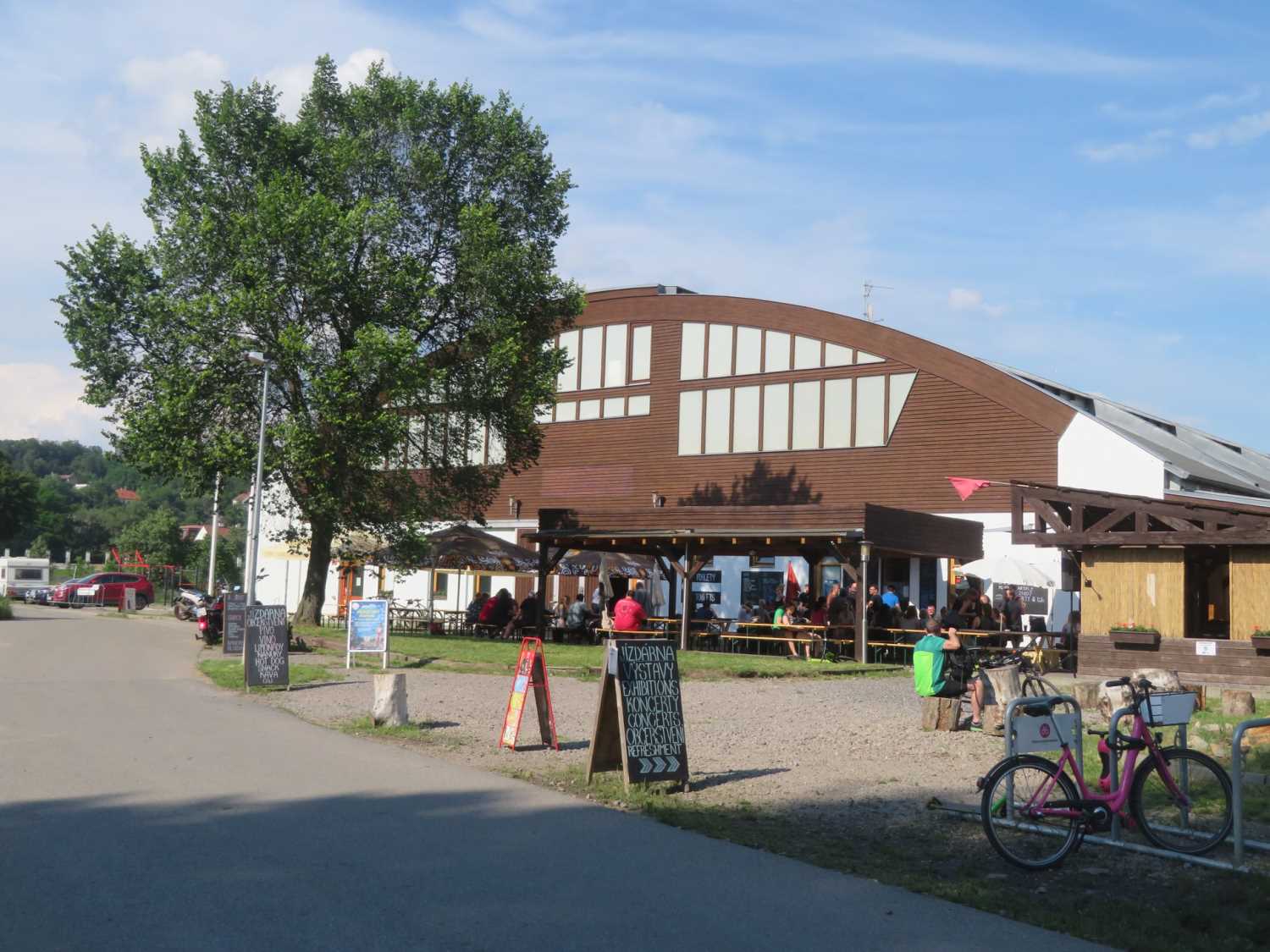
Císařský ostrov
How to get there: by foot from Stromovka; ferry P8 from Troja (bridge under construction)
What to do: bike ride or walk to Prague Zoo, have a beer and a sausage
Most of Císařský ostrov, or the Imperial Island, is taken up by the city’s waste treatment plant. Other parts are private property, including a horse riding school.
People use the island mostly as a way of getting from Stromovka to the Prague Zoo. A very small bridge links the island to Stromovka, and a new footbridge linking the island to Troja is being built. Until it is finished, there is a ferry.
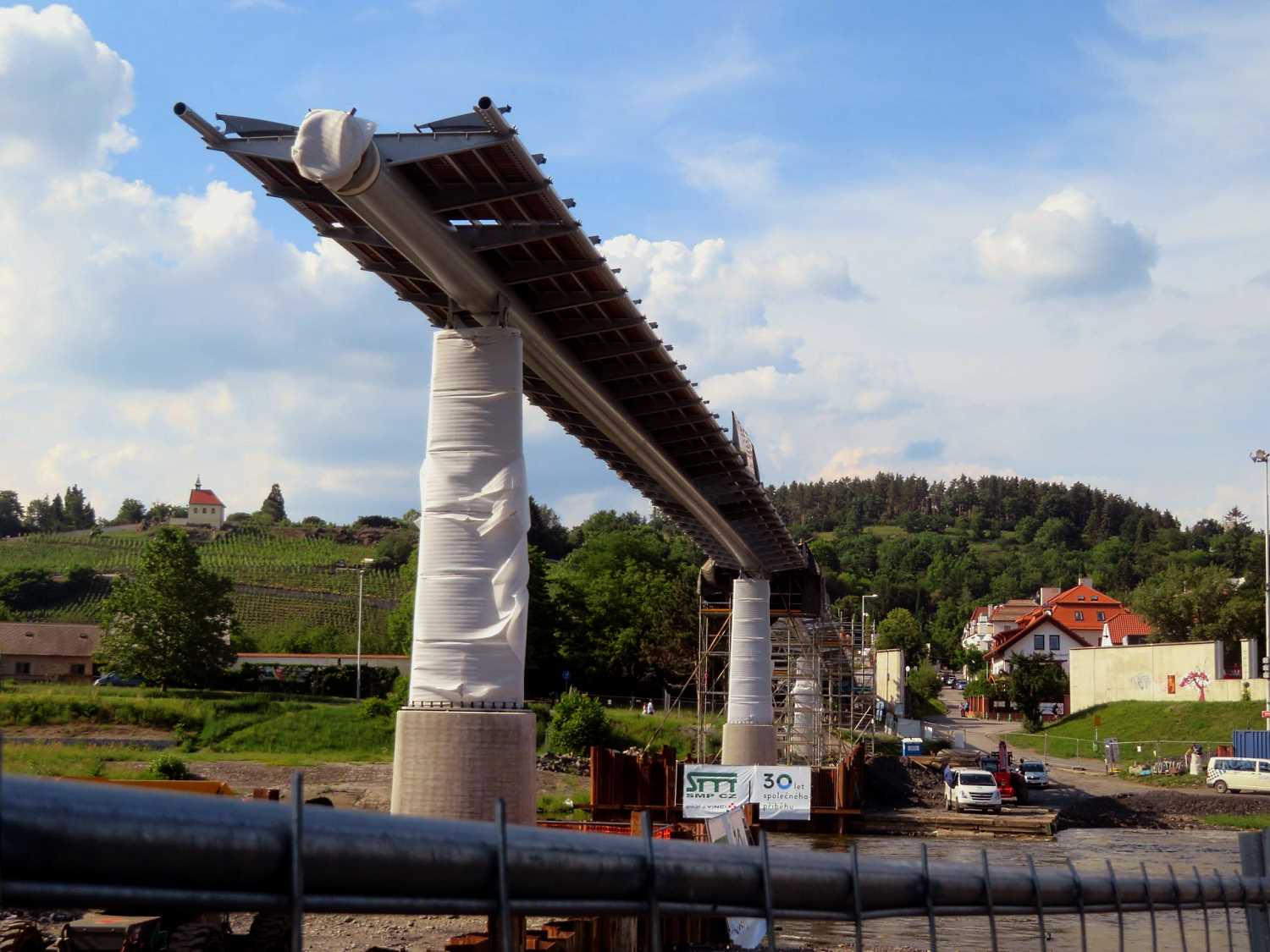
Cyclists often pass through, as on the Troja side there is path along the river that leads up and out of the city. The main attraction for passersby and cyclists is a beer and snack stand called Jízdárna that sometimes has live music and exhibits.
The island’s name comes from it having once been the personal property of Emperor Rudolf II, who used Stromovka as a royal game reserve. Previously, it was the property of the office of the highest burgrave of Prague.
The shape of the island has been heavily altered by the construction of locks and other work to stabilize the Vltava river. A stream that used to pass by island once led to an imperial mill. A few remnants of the mill have been incorporated into an upscale housing development at the far western end of Stromovka park.
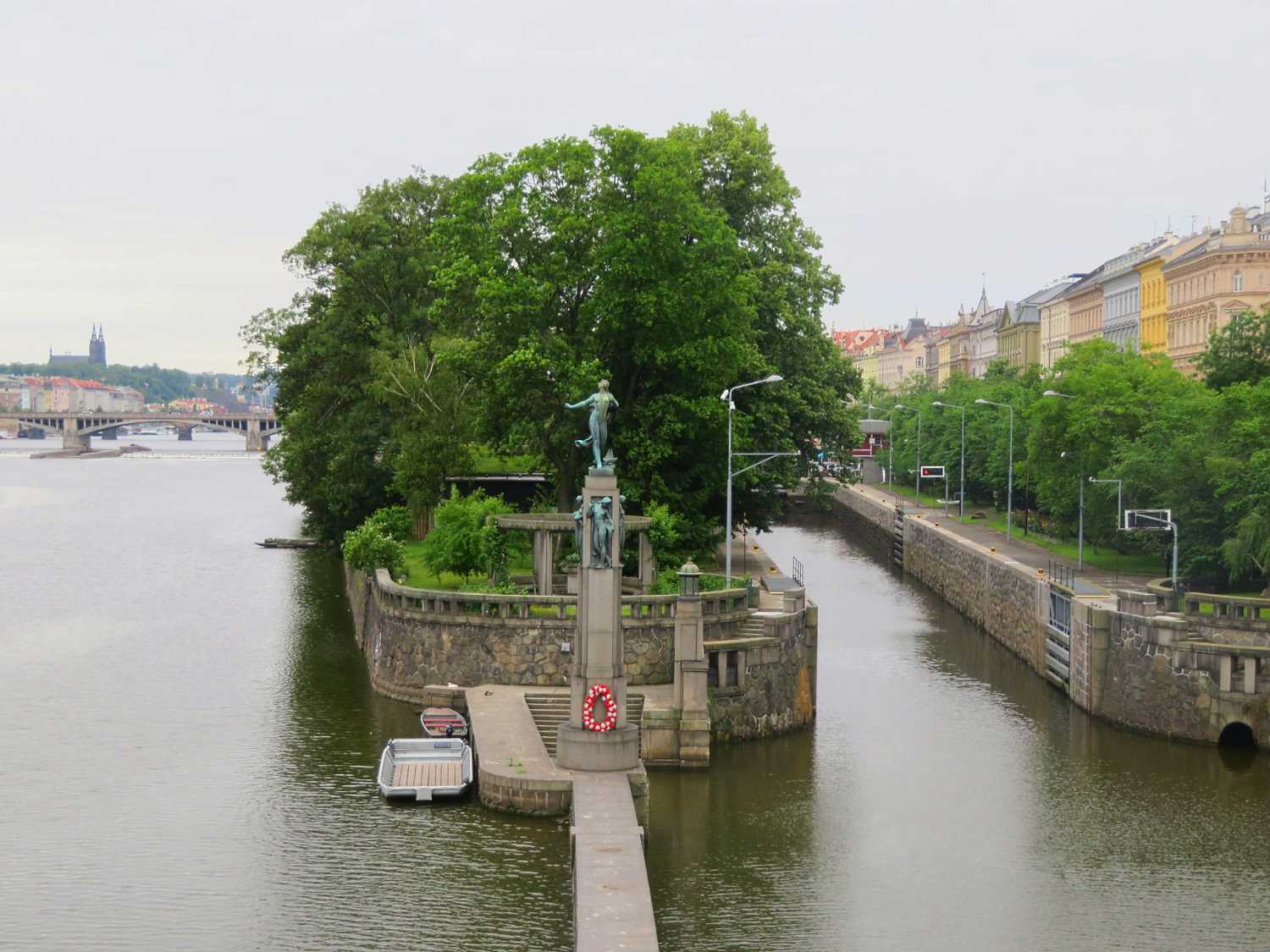
Dětský ostrov
How to get there: by foot from Janáčkovo nábřeží, tram stop Arbesovo náměstí
What to do: play sports or use a playground, eat at a restaurant
Prague 5 has invested heavily into playgrounds to return Dětský ostrov to its roots of being the children’s island. The new facilities opened in 2018, after five years of renovations. The previous playgrounds were destroyed in the floods of 2013. The total renovation cost 19 million CZK.
At the entry to the island, over an arched bridge from Janáčkovo nábřeží, there is a cafe and restaurant called Manu Risto & Lounge, serving Mediterranean food in a trendy setting in a long and narrow indoor restaurant, and a beer tap with comfortable seating outdoors.
Beyond that, to the right of the bridge as you enter the island is a series of playgrounds with whimsical items for small kids, a football pitch and a basketball court. The playgrounds are arranged in age order, with things for the youngest kids closer to the bridge and older kids furthest away.
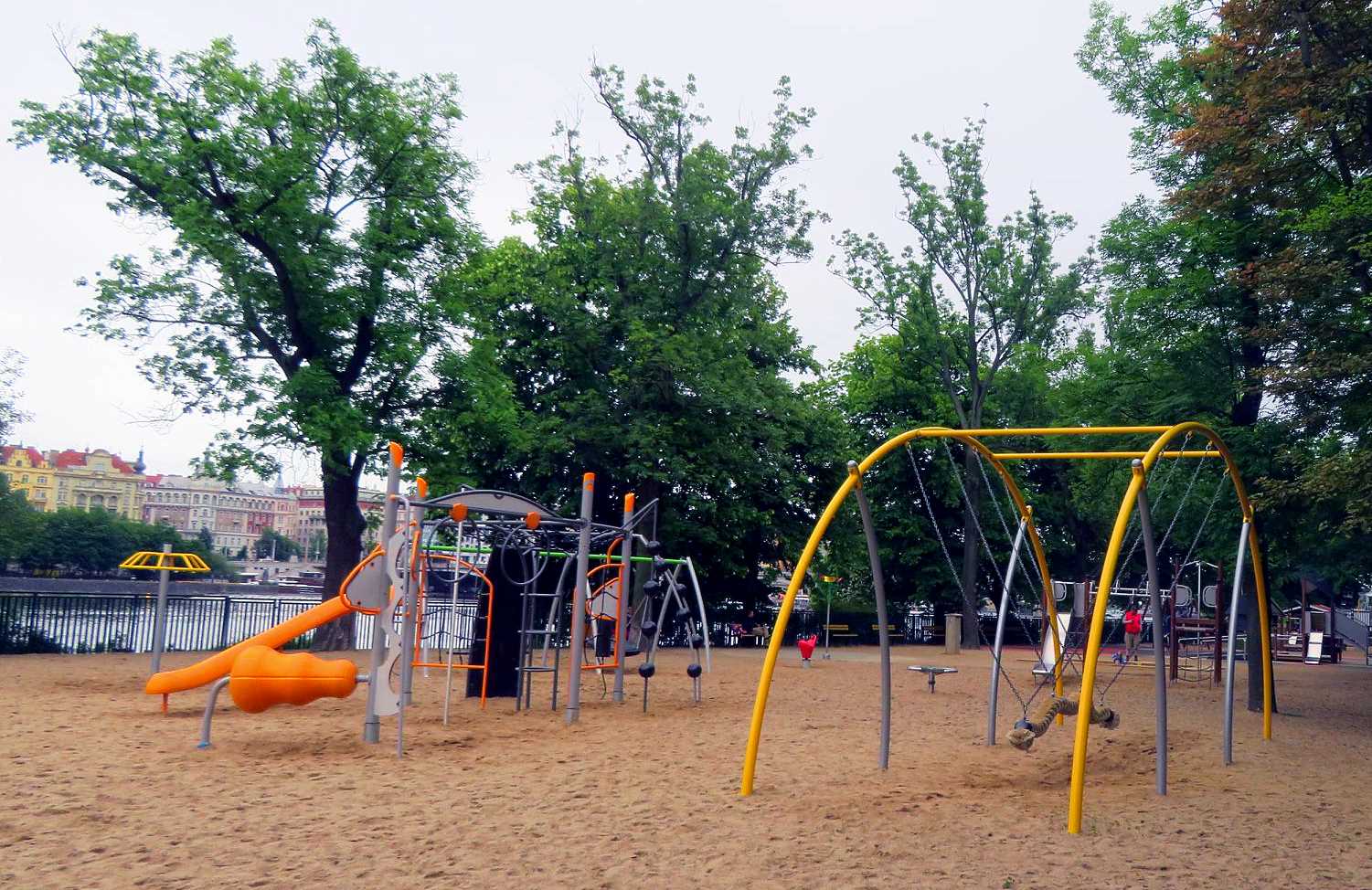
The northern part of the island is cut off from the public, as it has technical works for the river locks.
From the bridge Most Legií you can see a bronze statue on the northern tip of the island, This nude female form is Vltava, the spirit of the river. Around the square-based plinth are four plaques symbolizing the four tributaries. The statue, made in 1916, is by sculptor Josef V. Pekárek. A small round pavilion is behind the statue. Neither can be reached by the public.
Once a year on All Souls Day, members of the aquatic Vltavan association place wreath there for all those who have drowned in the river.
The name Dětský ostrov only dates back to the 1960s, when the first series of playgrounds was built there.
The island is first mentioned in 1355, and until the 18th century was called Maltézský ostrov, as it was owned by the Knights of Malta who operated the Church of Virgin Mary under Chain. Later it was owned by members of the Jewish community and went though the names Hykyšův, Funkovský and finally Židovský ostrov before getting its current name.
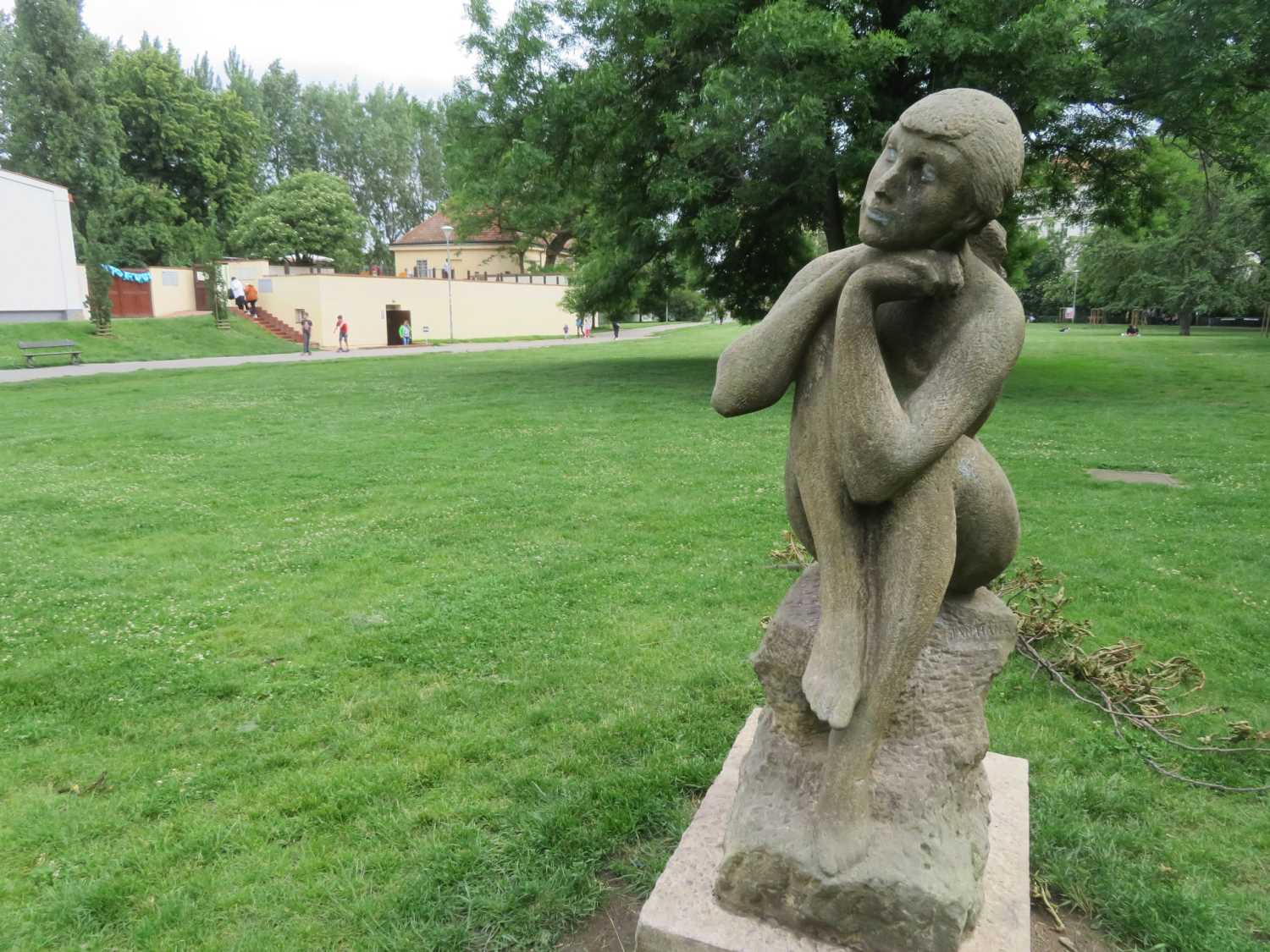
Kampa Island
How to get there: by foot from tram stops Malostranské náměstí, Hellichova or Újezd
What to do: go to an art museum, relax in a park, eat at restaurants, get refreshments, visit Charles Bridge
Technically, Kampa is an island but many people who enter from under Charles Bridge or from the Újezd side might not even realize it. Going there is hardly an escape from the city, as it is really just an extension of the touristy Malá Strana district. The history and points of interest, too many to recount briefly, will be explored in a future article.
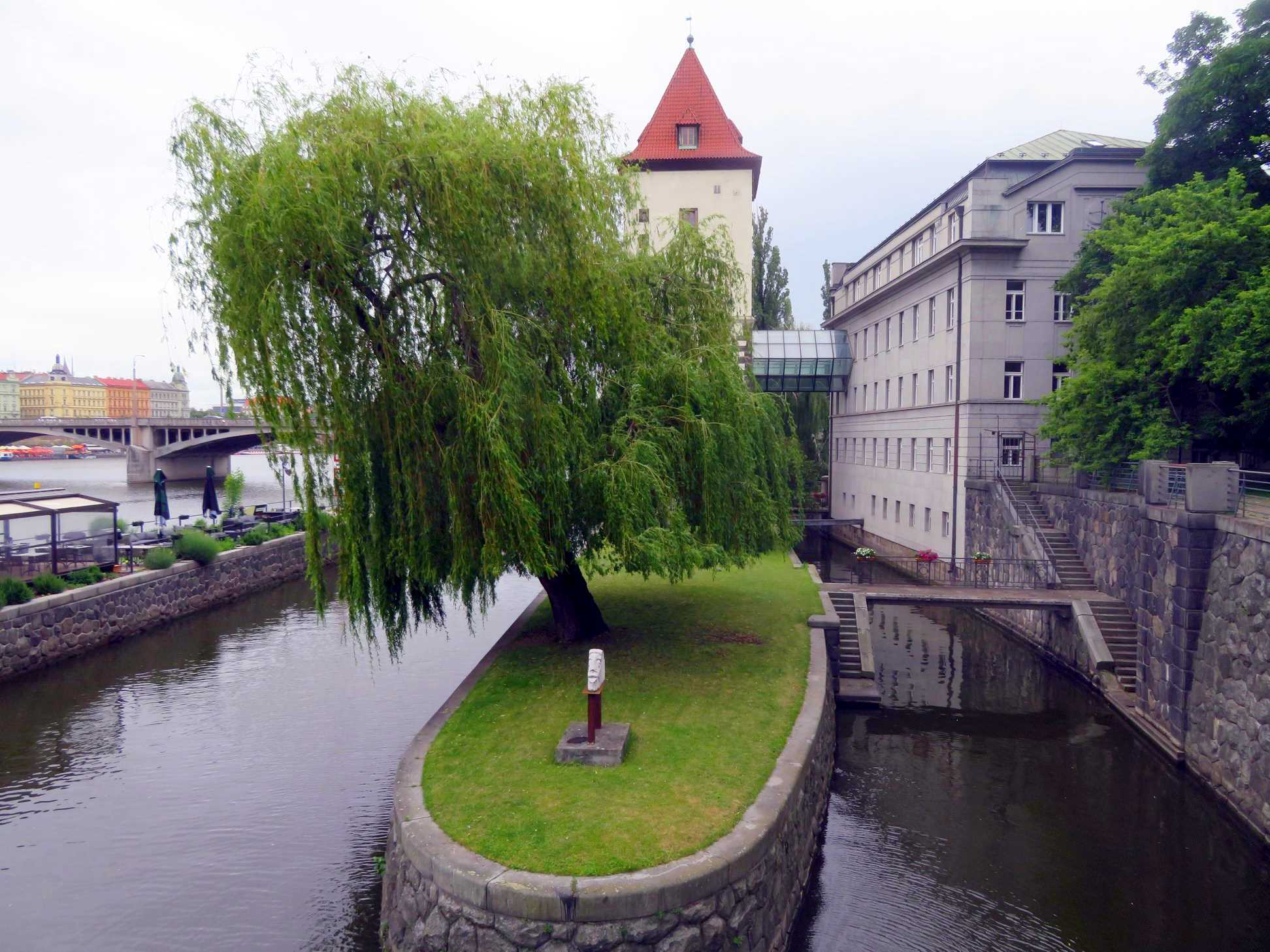
Petržilkovský ostrov
How to get there: not accessible to the public, next to the entrance to Dětský ostrov
What to do: can only be looked at.
The small Petržilkovský ostrov is the base for a 16th-century water tower made of white stone. The name comes from Jan Petržilek, a 15th-century baker who once owned a mill there. The island was larger, but part was attached to Dětský ostrov in the early 1900s when locks were built. A small stone sculpture of a face on a metal stand can be seen from the shore.
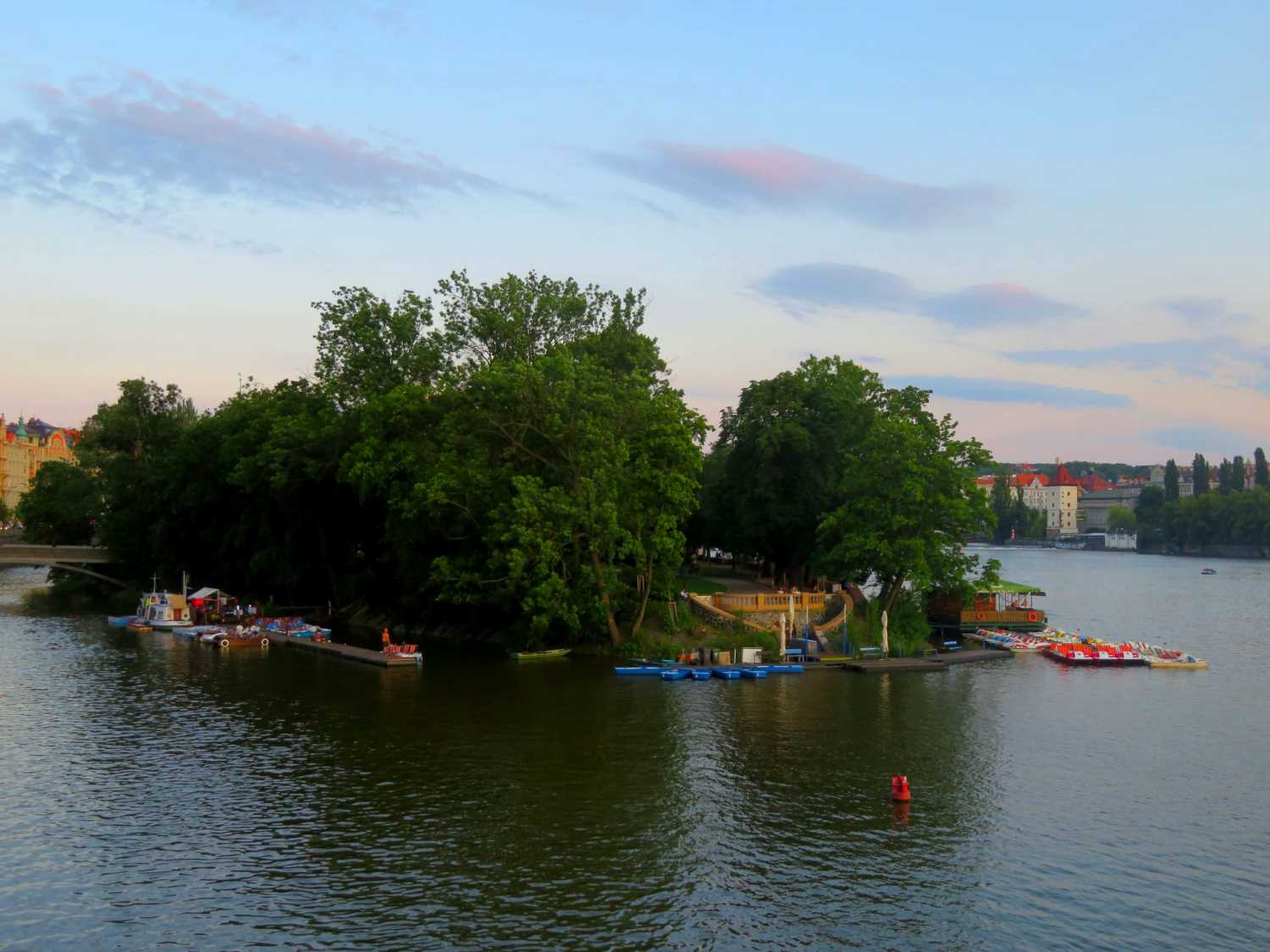
Slovanský ostrov
How to get there: by foot from Masarykovo nábřeží, nearest tram Národní divadlo or Jiráskovo náměstí
What to do: rent boats, eat at a snack bar or restaurant, use a playground
With Žofín Palace and some winding paths and small grassy areas, Slovanský ostrov retains a 19th century feel from the time when people went strolling in their Sunday best.
The island is where to go if you want to rent a paddle boat and get out onto the Vltava. There are three stands — Slovanka, and U Kotvy — with slightly different types of boats, and also small snack stands. Slovanka, on the west of the island, wins in the attitude category, sporting a pirate flag. It also has giant ducks among its fleet. S.P.L.A.V, at the northern tip, has fairly conventional boats, and U Kotvy, in the narrow channel on the east side, has some automobile-shaped boats.
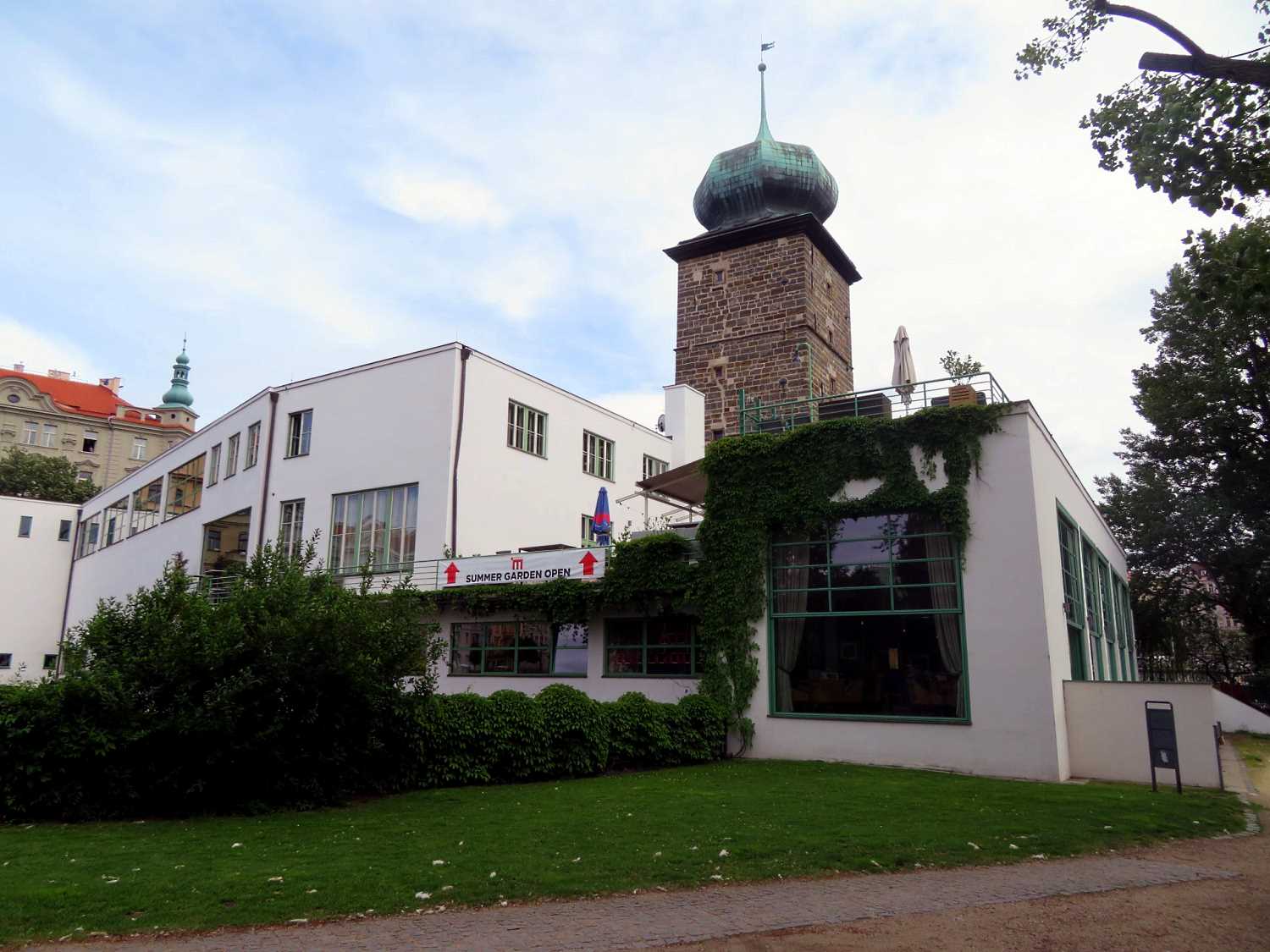
The southern tip of the island is connected by the art gallery and restaurant Manes, a functionalist building from 1930 that also serves a bridge. It was built for the Association of Fine Artists (SVU). The building is right next to the 16th century Šítkovská water tower.
One of the tower’s claims to fame is that from 1977 to ’89 it was used by the secret police (StB) to watch Václav Havel, who lived nearby on Rašínově nábřeží.
Grill Terrace Manes is informal, while Art Restaurant Manes aims at fine cuisine. There is also A garden restaurant at the back of Žofín called Žofín Restaurant by Stones. It has been under new management since the start of 2020. Sunday brunch is one of its popular items.
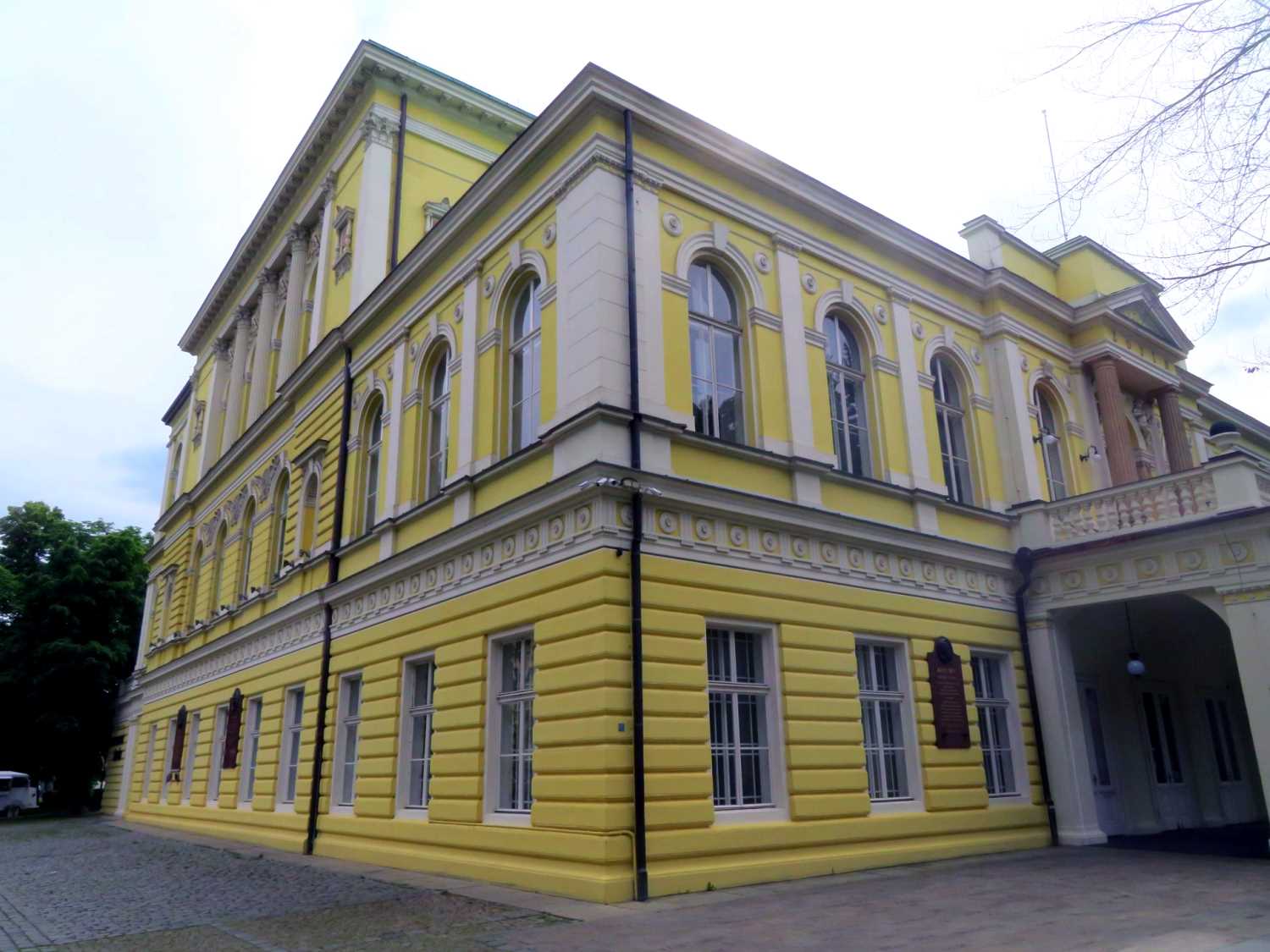
Between Manes and Žofín, there is a children’s playground. Just beyond the playground there is a moderately priced food wagon offering coffee, hot dogs (párek v rohlíku), near some benches.
Žofín itself serves as a venue for upscale events and concerts, as its opulent rooms can be rented. Most of the annual human rights conference Forum 2000 takes place there.
The palace was built in the Classicist style in 1836–37 and was named Žofín in honor of Princess Sophie of Bavaria. On June 12, 1848, the building hosted the Slovanský sjezd, a meeting with Czech patriot František Palacký as the chairman. The idea was to promote Slavic unity. The meeting led to the current name of the island.
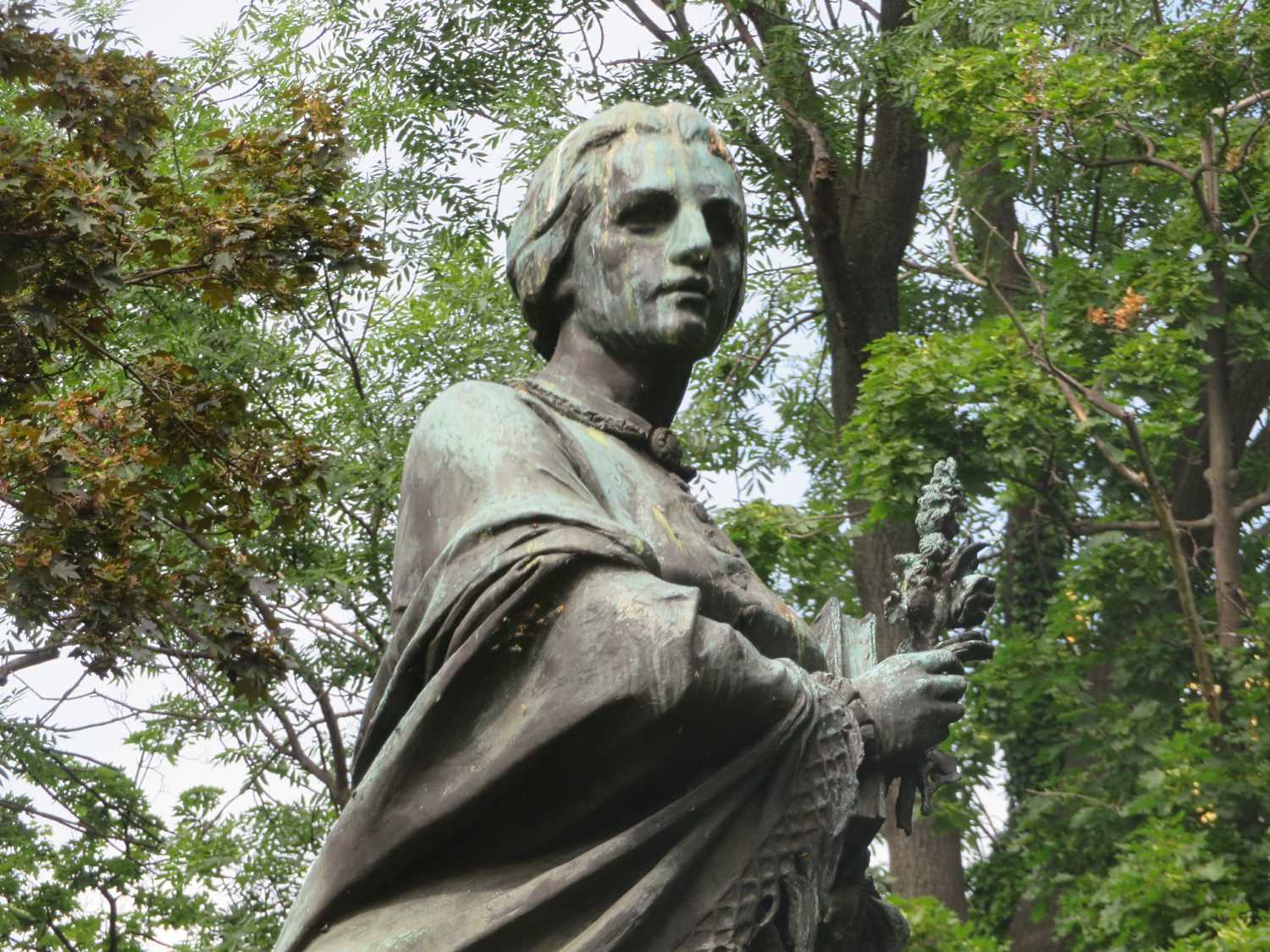
Around Žofín Palace are four large plaques for historical figures, including Ľudovít Štúr, who attended the 1848 meeting. On the eastern side of the building is a bronze statue of Souzvuk (Harmony) by sculptor Ladislav Šaloun, from 1927. It shows a main with braided hair playing a bagpipe, and it was placed on the island in 1946. Šaloun is known for the Jan Hus monument on Old Town Square.
In the northern part of the island there is a sculpture of writer Božena Němcová, made in 1955 by Karel Pokorný. It shows her as a young woman, rushing somewhere with a book in her hand.
The island was formed by silt deposits of soil during the 17th century, and didn’t appear on maps before then. It wasn’t until after the flood of 1784, that the island was fortified with walls, and trees were planted to stabilize the soil. It was first called Barvířský ostrov, then Šítkovský ostrov, Engelův ostrov and then Žofínský ostrov.
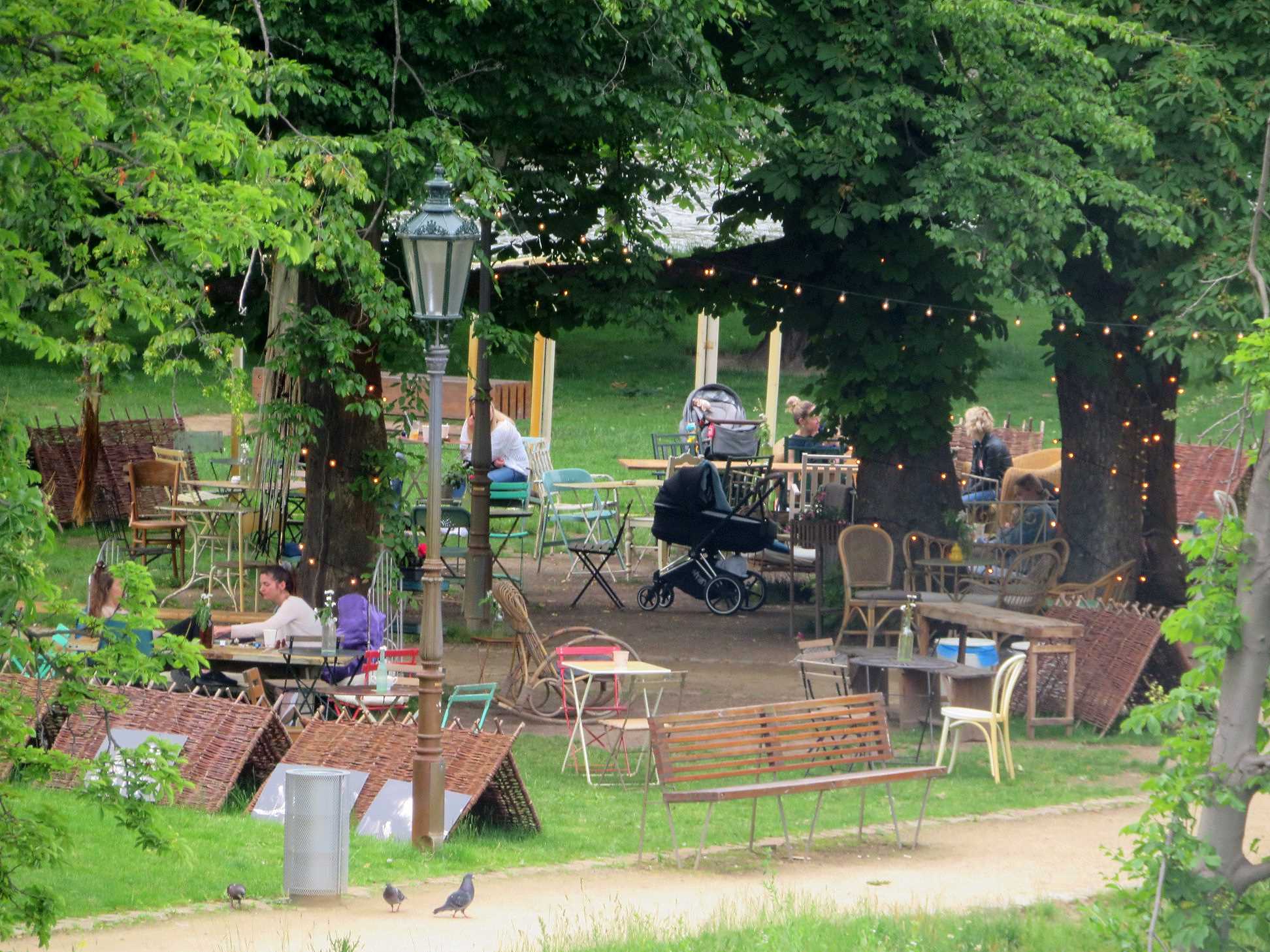
Střelecký ostrov
How to get there: by foot from the bridge Most Legií, nearest tram Národní divadlo or Újezd
What to do: get refreshments, dance and listen to music, use a rope playground, play tennis or other sports
Most Legií divides this island in two parts. The northern half has two spots to hang out with snacks and beverages. Stage Bar in the center near a podium has picnic benches near a wooden shack. Cocovan has a tepee, folding chairs and tables by a vintage caravan. Wicker barriers surround the place, and the is some Native American–style decor Both are cashless, requiring people to pay with a debit card or similar method.
This half of the island has a playground with rope exercise equipment, and up at the sandy point at the island’s northern edge there is a nice view of the river, Kampa and Charles Bridge.
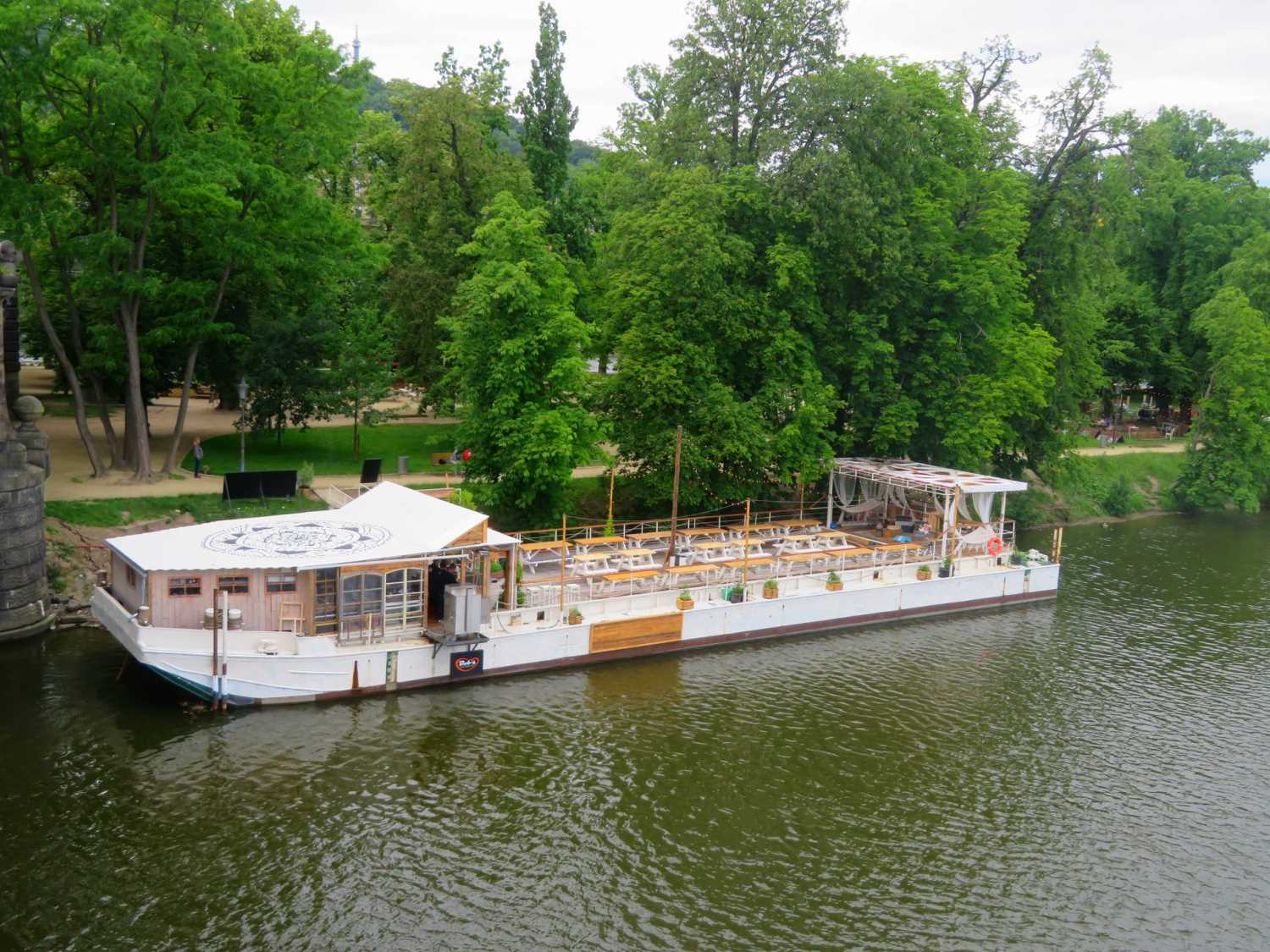
The southern half of the island is less interesting. Two touristy restaurants, known more for the view than the food or service, share a historical 19th century inn.
The inn is also home to the SK Start sports club. People can sign up for archery lessons or games such as tennis, badminton and petanque. A beer stand in front of the building accepts cash.
The island is first mentioned in the 12th century when it was called Trávník (Lawn). It was used for archery practice starting in the time of Emperor Charles IV, which gave it the name Střelecký ostrov, or Shooters Island. It was bought by Old Town in 1472. During several conflicts, it was a strategic position.
In 1892, the first large Sokol meeting was held there, and again in 1926. The first May Day celebration was held there in 1890. During World War II, the island was used by the Hitler Youth (Hitlerjugend).
The Empire-style building on the southern half, known as Hostinec č.p. 336, dates to 1812. It was originally designed by architect J. K. Zobel, and later expanded. The facade has the Latin inscription “Nobis et posteritati” (Us and posterity) plus several plaques about historical events and renovations.
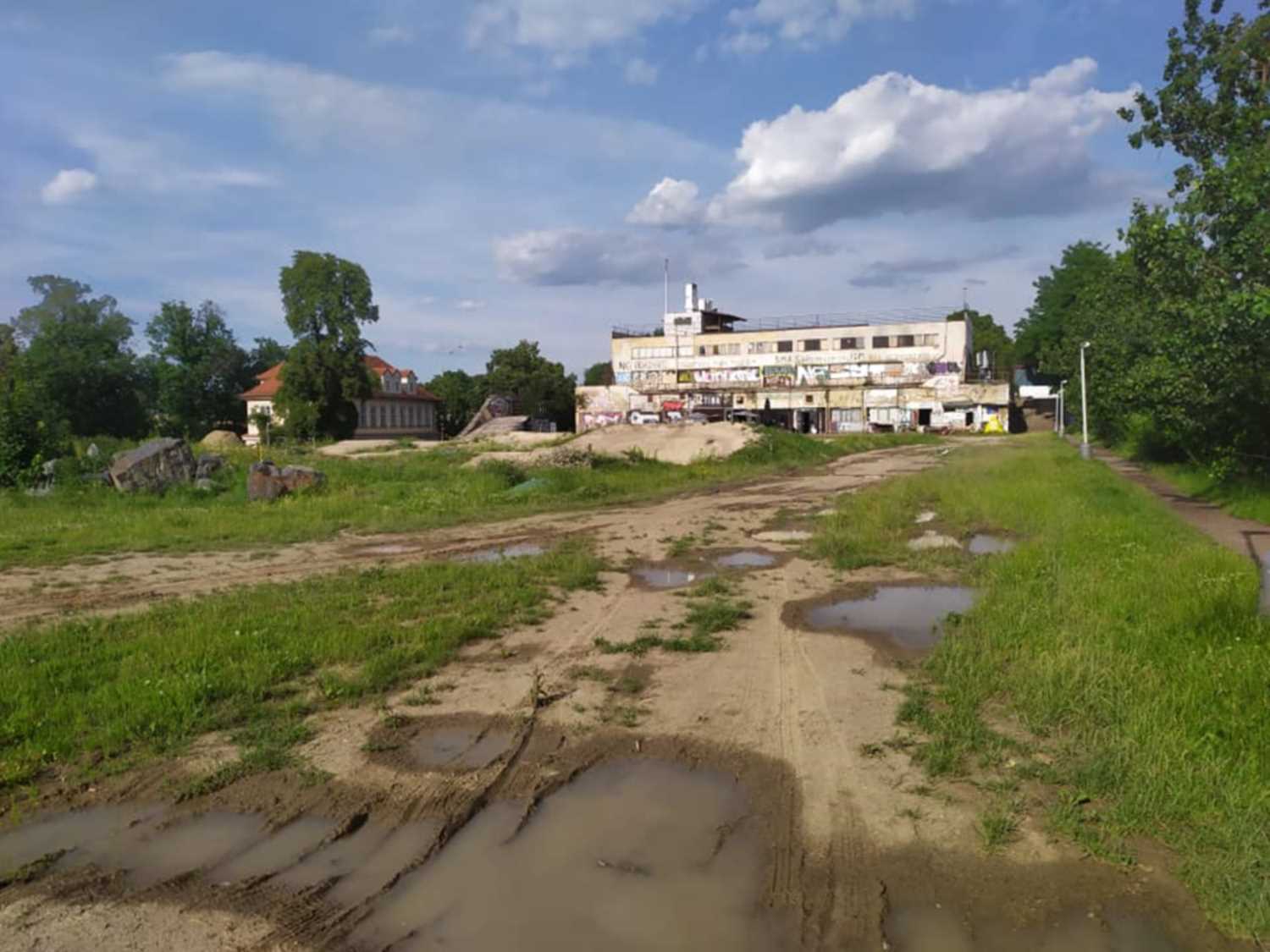
Štvanice
How to get there: ferry P7 from Pražská tržnice or Rohanský ostrov, by foot from Hlávkův most, tram stop Štvanice
What to do: skateboard, play tennis, bike ride on dirt, get refreshments, eat at a restaurant, sit in solitude
The entire social spectrum can be found on Štvanice, from anarchists and skateboarders to executives lounging at the tennis club.
On the west side of Hlávkův most, there is a somewhat rundown Villa Štvanice that serves as a ruin pub, with outdoor seating. A pipe sprays a mist of water on warm days. The villa also hosts theatrical productions, mostly in Czech. The villa was built in 1824 as a restaurant and dance hall. It is the last remaining one out of three that were on the island. It has been a protected monument since 1958.
Businesses used to have offices in the villa, but they all left due to flooding.
Behind the villa there is community garden, and in the front there is Bikepark Štvanice, with dirt hills for cycling.
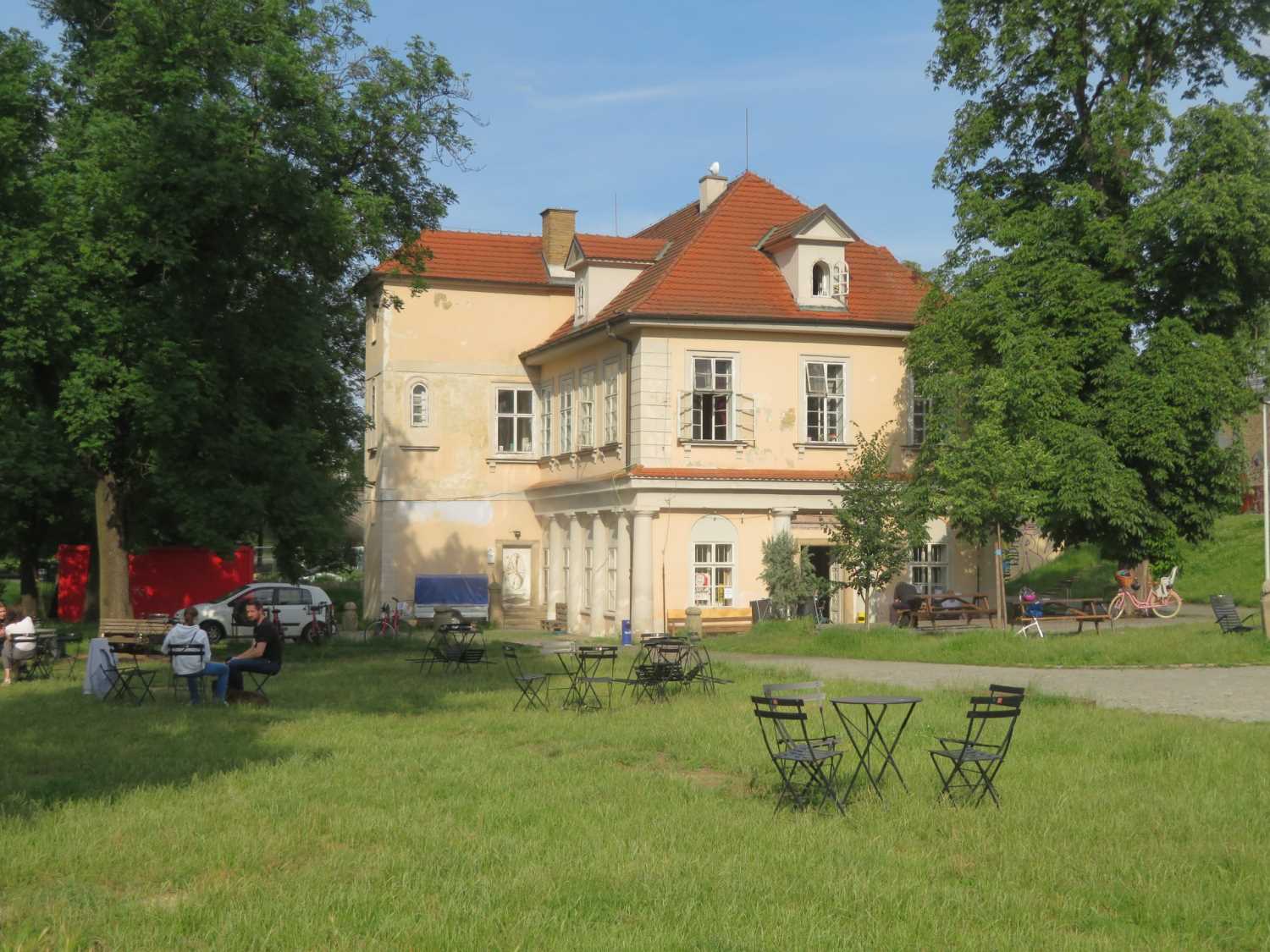
Right next to Hlávkův most is another building in ruins. A former nightclub is now known as the counterculture center Fuchs 2, covered in anti-capitalist graffiti. It hosts the bar and music venue Bike Jesus plus a bike repair shop and some other small businesses.
The western tip of the island has a green hydroelectric building, built in 1903–14 in the Art Noveau style. There are also technical buildings for river locks. These are closed to the public.
The eastern side of the island has a large tennis club called I. Česky Lawn Tennis Klub Praha, with a fancy restaurant called Tiebreak. The public can access the restaurant, but most other services require a membership or advanced reservations. The club has been on the island since 1901. The modern tennis arena was built in 1986 and hosts some international events.
People need to walk around the tennis club, not through it, to get to a covered area for skateboarding called Mystic Skatepark Štvanice, with its own snack stand. Beyond that there are seldom used open fields with benches. The ferry drops people off at the eastern tip of the island where these are located.
Štvanice is the last of a group of islands in the same area, the others have been subsumed into the mainland during various efforts to regulate the Vltava river.
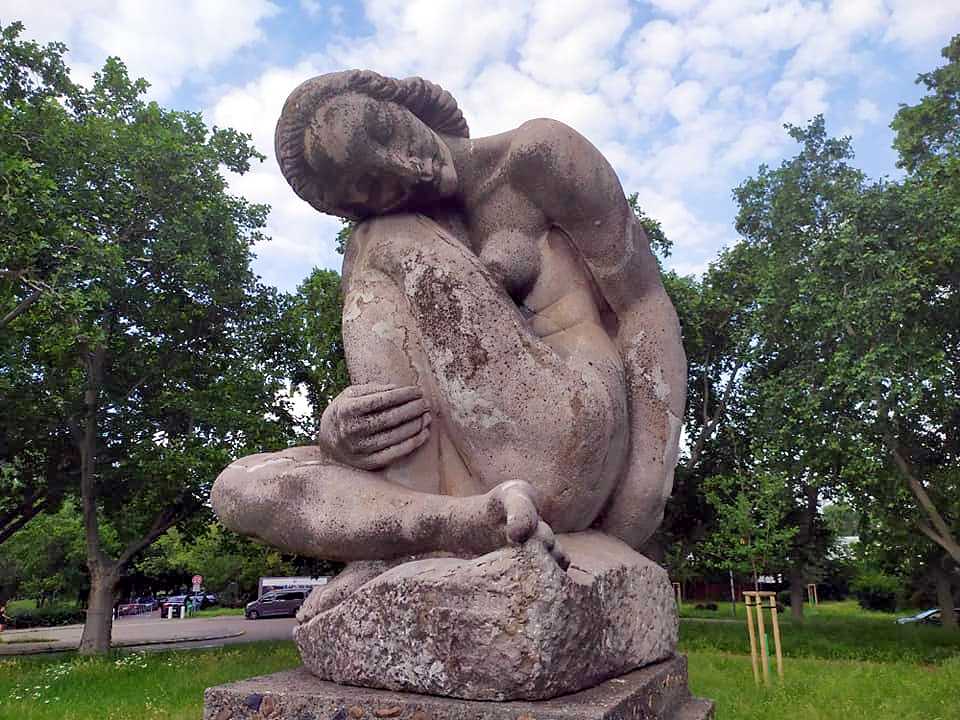
There is a bit of a dark history to Štvanice, as the name means “baiting.” A wooden arena was built at the end of the 17th century, and until 1816 it was used for dog fights and other blood sports with animals such as bears. Starting in 1877, the island had variety shows hosted by gymnast and pantomime artist Eugenio Averino. In 1883 ice houses were built there, but did not last long as modern refrigeration made them unnecessary.
An ice hockey arena stood on the island until 2011. The Czechoslovak men’s national team won the World Championship there in 1947 for the first time.
There are a few pieces of art on the island. Right by the tram stop in the grassymiddle leading to the tennis center is marble sculpture Sitting Girl (Sedící dívka)by Jaroslav Horejc, from 1965. He also made the plaque on Karlovo náměstí at the House of the Stone Table and some decorations at the Health Ministry.
Next to the tennis center there is Tennis Player (Tenisty) by Ladislav Janouch, dating to 1986 when the center opened.
Hlávkův most has allegorical relief sculptures by sculptors Bohumil Kafka and Ladislav Kofránek on the pillars. There are also stone medallions with the faces of 12 personalities from when the bridge was built.
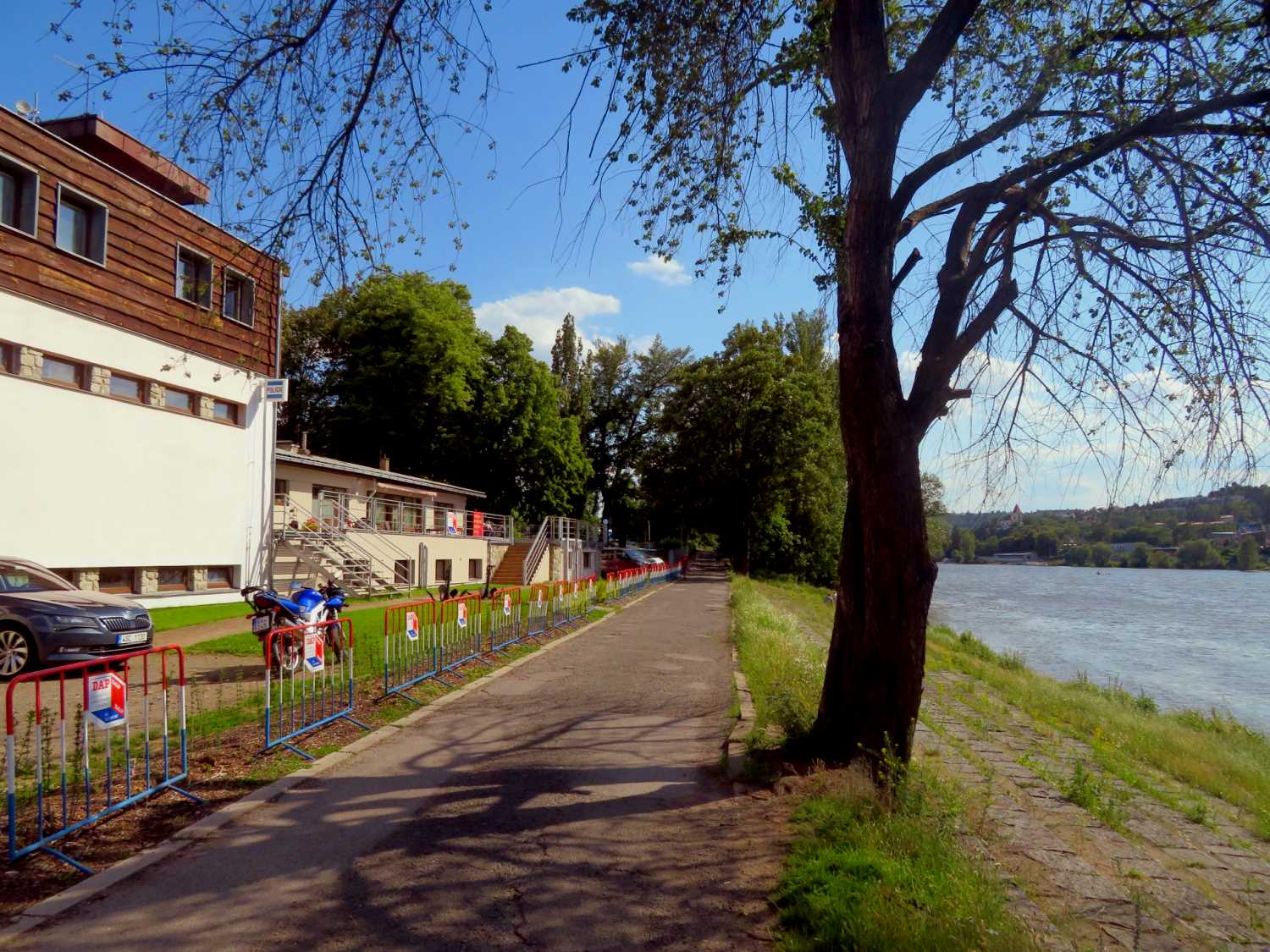
Veslařský ostrov
How to get there: ferry P3 from Lihovar; by foot from Podolské nábřeží, tram stop Kublov or Žluté lázně
What to do: bike ride, relax in solitude, get refreshments
A narrow strip of land extending out from Podolí is home to the Czech Rowing Club (ČVK), a small boat sales and repair shop, a police station and some small businesses. A single path runs halfway down the island. The northern part of the island is closed to the public, as it is used by the nearby Podolí waterworks to collect water.
The ČVK clubhouse has a limited range of refreshments and a small raised patio with tables.
There is little of interest for people not involved in rowing or boating. The eastern side of the island has some long rows of wide stone steps leading down to the water, and some shade trees. People lay there to sunbathe in nice weather.
Cyclists use the ferry that stops as the southern tip of the island to cross the river to the Smíchov side, where there is a cycle path that leads south and out of the city,
Veslařský ostrov means “rowers’ island.” The narrow sandy strip is first mentioned in 1420, and it was expanded with deposits from floods. The Schwartzenberg family used it as a port and warehouse for shipping wood from Šumava. As a result, it was long known as Švarcenberský ostrov before it became a rowing and boating center. The island was artificially expanded by the sinking of a cargo boat to trap sediment.
The annual Pražské primátorky (Prague Mayor’s) boat race takes place there.












 Reading time: 15 minutes
Reading time: 15 minutes 

















